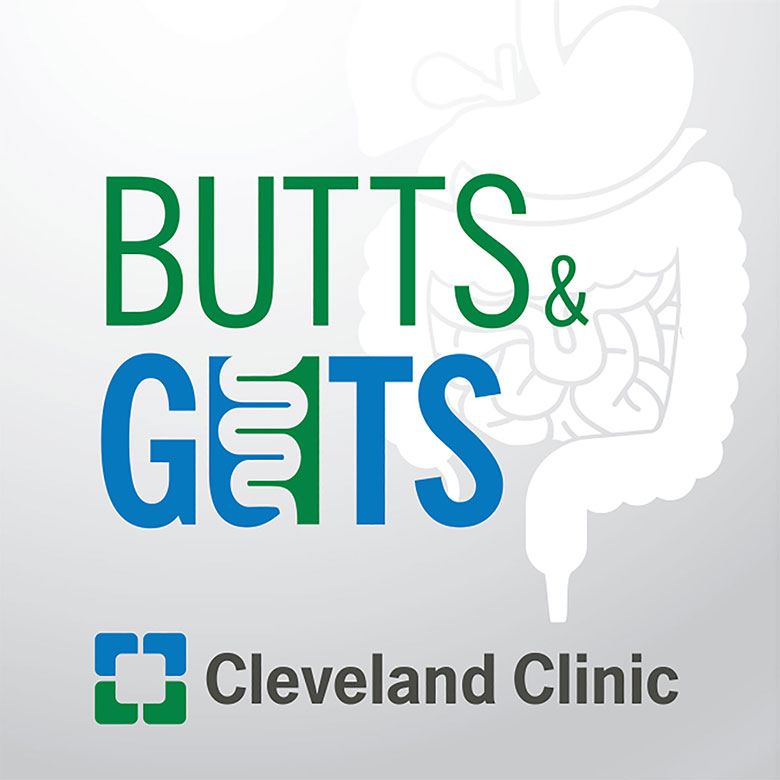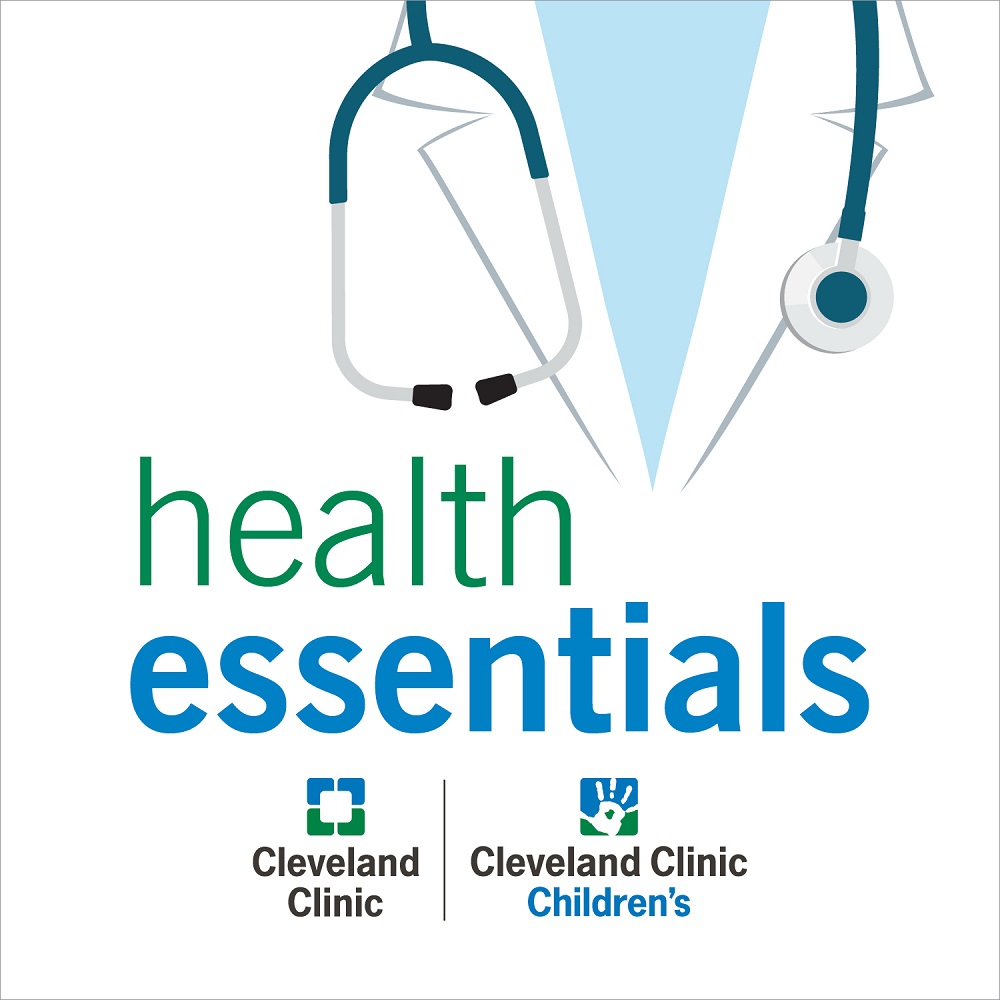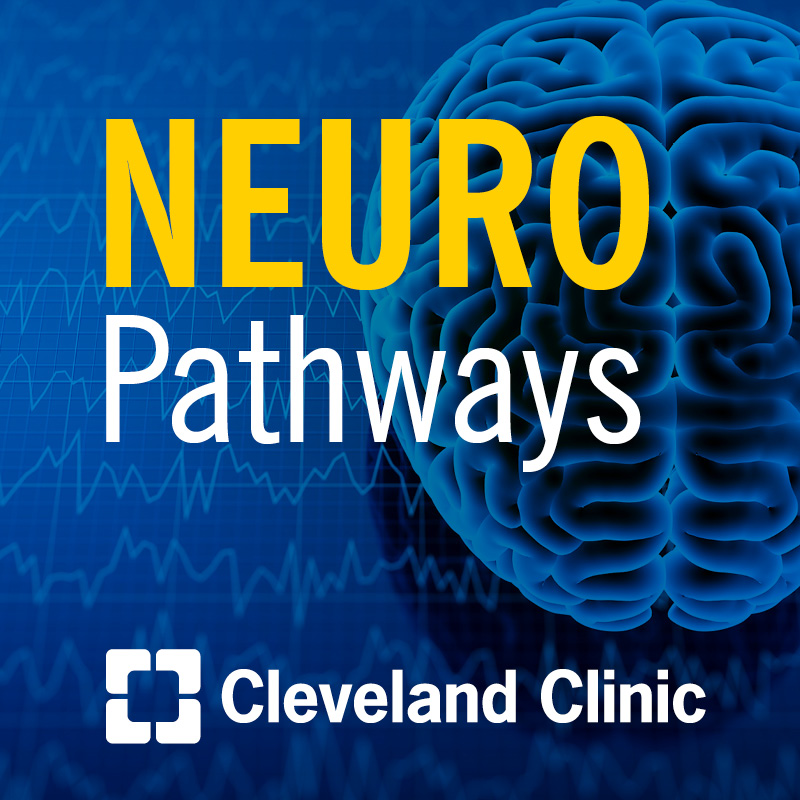Real-World Insights on Bispecific Antibodies for Relapsed/Refractory Large B-Cell Lymphomas

Medical Oncologist in the Lymphoid Malignancies Division, Taylor Brooks, MD, joins the Cancer Advances podcast to discuss real-world data on bispecific antibodies for relapsed or refractory large B-cell lymphomas that was presented at the 2024 American Society of Hematology (ASH) Annual Meeting. Listen as Dr. Brooks shares insights into efficacy, safety, and challenges patients face outside clinical trial parameters, and how these therapies are reshaping treatment approaches.
Subscribe: Apple Podcasts | Podcast Addict | Buzzsprout | Spotify
Real-World Insights on Bispecific Antibodies for Relapsed/Refractory Large B-Cell Lymphomas
Podcast Transcript
Dale Shepard, MD, PhD: Cancer Advances, a Cleveland Clinic podcast for medical professionals exploring the latest innovative research and clinical advances in the field of oncology. Thank you for joining us for another episode of Cancer Advances. I'm your host, Dr. Dale Shepard, a Medical Oncologist, Director of International programs for the Cancer Institute at Cleveland Clinic and Co-Director of the Cleveland Clinic Sarcoma Program. Today, I'm happy to be joined by Dr. Taylor Brooks, a Lymphoma Specialist in the Lymphoid Malignancies Group here at Cleveland Clinic. He's here today to discuss real world data on bispecific antibodies for relapse in refractory large B-cell lymphomas, so welcome.
Taylor Brooks, MD: Thanks for having me, Dr. Shepard.
Dale Shepard, MD, PhD: Absolutely. Give us a little bit of an idea of what you do here at the Cleveland Clinic.
Taylor Brooks, MD: I'm a medical oncologist, and as you said, I'm in the lymphoid malignancies division. I specialize in taking care of patients with all kinds of lymphoma from the time they're diagnosed in the first line area of treatment. If lymphoma returns, I can take care of them at that time and anytime thereafter.
Dale Shepard, MD, PhD: Excellent. Well, we're going to talk about some research that you did with bispecific antibodies for relapse from refractory lymphomas. A lot of different people might be listening in. Give us a little bit of an overview. First off, what is this relapsed refractory lymphoma group look like? Who are we talking about treating?
Taylor Brooks, MD: Relapsed or refractory diffused large B-cell lymphoma, the most common aggressive lymphoma, it's challenging to treat even despite recent advances in therapy. The historical standard has been salvage chemotherapy and then more high dose chemotherapy and autologous stem cell transplant. It's been that way for almost three decades. But that maneuver is really only available in a very small fraction of patients for many reasons. It's a specialized procedure. A lot of patients can be older and may not be able to undergo such an intensive therapy. Even among those who can be treated this way, still a small fraction are ultimately cured. Other advances like chimeric antigen receptor T-cell therapies have been advanced in the last 10 years or so. They can generate durable remissions in many patients. But still, for those who can't receive this therapy or for those who relapse after it, the outcomes can be very poor. In recent years bispecific antibodies have been promising therapy that has emerged for patients with these conditions.
Dale Shepard, MD, PhD: Remind us when we say bispecific antibodies, lot of people know about monoclonal antibodies and we've had antibody therapies for many things for a long time, specifically bispecific antibodies, what is that all about?
Taylor Brooks, MD: Bispecific antibodies are a type of monoclonal antibody therapy where one construct can target two or more different areas on malignant cells. For relapsed aggressive B-cell lymphoma, one target is CD20, which is a surface marker that is and has been one of the most common targets for many, many years. The medicine Rituximab is a staple in lymphoma treatments and targets CD20. The other target on the two currently FDA approved bispecific antibodies, Epcoritamab and Glofitamab is CD3, which is a cell surface marker on cytotoxic and helper T-cells. By targeting these two areas of the cells at the same time, these medicines can redirect the patient's own immune system to target and kill malignant B cells.
Dale Shepard, MD, PhD: When we talk about bispecific antibodies for relapsed refractory disease, we talk about CAR-T therapies. Currently, what's that decision about when to use each of them?
Taylor Brooks, MD: Right. The current approvals for Epcoritamab and Glofitamab in the United States is after two or more prior lines of therapy. And CAR-T cell therapy has the same approval, first came after two or more lines, but more recently CAR-T cells have been approved for a more high risk or refractory population, so for individuals who don't achieve a remission of first line therapy or who relapse within a year of completing it. Approvals for bispecifics are at least after two prior lines of therapy. Many patients can, and we saw this in our own data, receive CAR-T cells either before or after bispecific therapy. Part of our interest is to describe this and learn a little bit more about how these agents are used and sequenced.
Dale Shepard, MD, PhD: Let's jump into the research that you presented looking at real world data for patients who received these drugs. Give us a little bit of an idea when I say real world data, what does that mean? Why is that important?
Taylor Brooks, MD: With increasing uptake into clinical practice after drug approvals, there's more interest in the efficacy, the safety of these drugs in non-trial settings. Currently, there's not much known about the effectiveness and safety of these drugs outside of clinical trials. This research is important because patients who are treated in the real world setting differ often in very important ways from those who enroll onto studies. These differences can influence their outcomes. We were able to collaborate with 20 other centers throughout the United States and leverage information collected from electronic health records to evaluate patients with relapsed DLBCL who were treated with either Epcoritamab or Glofitamab.
Dale Shepard, MD, PhD: So 20 centers, so a wide range of different groups, management styles, things like that. About how many patients were included?
Taylor Brooks, MD: All told we had 245 patients altogether. The majority of those, unsurprisingly, had diffuse large B-cell lymphoma, not otherwise specified again, the most common histology of aggressive B-cell lymphoma. But we also had a decent fraction of patients with very high-risk disease like high-grade B-cell lymphomas, B-cell lymphomas with rearrangements of the oncogenes, MYC, bcl-2 or BCL6, and those who were refractory to any or multiple prior therapies.
Dale Shepard, MD, PhD: I guess the differentiator here is that in a real-world setting, you mentioned before these might be people who may not have necessarily qualified for a clinical trial. What were some of the differences in your population compared to who may have been in a trial?
Taylor Brooks, MD: The majority of the patients that we evaluated in our real-world study would have been ineligible for the registrational trials of Epcoritamab and Glofitamab. To be precise, 71% of the 245 patients that we evaluated had some comorbidity at the time of bispecific therapy that represents one of the exclusion criteria for those studies, so nearly three-quarters of the individuals that we evaluated. Our population was around 70 years old on average, most were male, about two-thirds, and more than half, 52% had disease that was refractory to first-line therapy, which is a bad prognostic indicator. 60% had received CAR T-cell therapy and progressed before bispecific antibody therapy. Of these individuals, about half of them progressed within 90 days of getting CAR T-cell infusion, which is some of the worst disease that physicians and practitioners have to manage.
Dale Shepard, MD, PhD: From an efficacy standpoint, what did you find and how does that compare to what was known from a trial setting?
Taylor Brooks, MD: We found that for response rates, the real-world data was quite comparable to trial data, actually. The overall response rate to either bispecific was about 52% with a complete response rate of 25%, which is comparable to what has been published in the phase one, phase two studies of these drugs. The median duration of response for those who achieved a complete remission was relatively short, just 10 months, and even shorter 4.1 months for those who achieved a partial response. Responses were generally quick, within about 55 days, which is important for practitioners to know because at the time that they're instituting these medicines, often patients can be progressing very rapidly and have a lot of symptoms that need to be managed. The response rates were achieved relatively quickly and between the drugs Epcoritamab and Glofitamab, the differences were not statistically significant. That's also important to know for providers, as well.
We investigated survival analyses in our population. The median progression free survival was just 2.6 months, and the median overall survival was 7.8 months. At six months, PFS and OS were 36% and 60% respectively. We found that somewhat unsurprisingly, those who were not eligible for registration studies because of comorbidities did significantly worse compared to those who could have been enrolled on studies. In addition to that, we investigated a couple of other important prognostic factors for this disease. Mutations in P53 was something we looked at and whether you had a mutation or not, we found that the survival outcomes were actually not statistically different. That was something interesting. Despite the large proportion of people in our population who were treated with CAR T-cells, whether or not you got CAR T-cell therapy prior to bispecifics did not seem to have an influence on your outcomes, which is also important and an interesting finding.
One of the most interesting things that we were able to find was differences in CD20 expression, so the target again for these two drugs and how these patients do. Occasionally before getting these or other medicines, patients with DLBCL and aggressive lymphoma will lose expression of CD20. It's a relatively common event, especially after treatments like rituximab. We found that 105 out of 245 patients roughly had biopsies before bispecific therapy and all but 15 had detectable levels of CD20. The progression-free and overall survival was significantly different between those with and without CD20. With CD20, the PFS was 3.5 months, and without it was only 1.3 months. Similarly, overall survival, if you retained CD20 expression was 11 versus two months if you did not, so pretty dismal outcomes if you didn't have detectable expression of the target for these drugs.
One of the really important and unique things about this collaboration with our centers was that we had 19 individuals who had paired samples, before bispecifics and after. For those who had a pre and post biopsy, 90% lost CD20 expression after bispecifics. If you did, your time to progression was less than four months. This is a common mechanism of resistance for B-cell lymphomas and other avenues. It is emerging as an active area of research in the bispecific realm for these kind of therapies. Though we only had just over a dozen patients with this information, our findings are pretty striking about how they did if they lose the target.
Dale Shepard, MD, PhD: Do you think this may at some point lead to screening, looking for a CD20 expression and making treatment decisions based on that?
Taylor Brooks, MD: We think based on our results that if you're thinking about initiating bispecific antibody therapy for your patients, it's imperative to assess for CD20. If it's undetectable, then that would really warrant a consideration of the potential risks of futility of these kinds of therapies based on what we found. For areas of research, certainly someone could consider if you have a patient with a sluggish response or someone who doesn't achieve a complete remission, assessing for CD20 expression is something that might be informative. Now, it's difficult to get a lymph node biopsy and assess for CD20. Alternatives to that like analyzing ctDNA for the transcripts of CD20 might be a less invasive way to get some insight into this potentially important biomarker.
Dale Shepard, MD, PhD: On the safety side, there was a significant number of people who may not have qualified for the trial. How did that translate into overall toxicity of the therapy, changes in neurotoxicity, or cytokine release syndrome?
Taylor Brooks, MD: Somewhat surprisingly, even though we had a population, the majority of which were more comorbid and more refractory than individuals on the studies, we didn't necessarily observe an increased rate of overall rates of cytokine release syndrome and neurotoxicity. The rates of either were quite comparable to published studies, somewhere on the 40 to 50% range for any grade. However, one thing that we did notice was an increased rate of high grade events. There were a number of deaths attributed to cytokine release syndrome in our population, which was not observed in the published studies and at least one death related to neurotoxicity. That is something important for providers to consider is while certainly by far and away these medicines are well tolerated, and at this point, especially with experience from CAR T-cell therapies, the management of these special toxicities is becoming more and more familiar. It should be noted that there can be high grade events, which we did see in our real world population.
Dale Shepard, MD, PhD: I guess the question, were you surprised by the number of people in the real world that are getting this drug that are so much different than the trial? We all know that trials, they're very, very, very rigid. It's hard to get people on trials because of that, but then once the drug's approved, it gets out into the wild. You said nearly three quarters of the people had things that might have excluded them. I guess if you were to editorialize, what does that say about how we do trials now and what are your thoughts on... This is really, really important because it points to what really happens, they're both important, but in different ways. What are your thoughts on how you put the two of those together?
Taylor Brooks, MD: Yeah, is it surprising to me? No, because like you say, there's certain rigidity with which trials need to be developed in order to, number one, prove safety, number two, prove efficacy. Yes, time and time again in oncology, we see that when drugs do get out in the real world that patients are being enrolled who would otherwise be excluded. I think that it definitely hearkens to what I think is an emerging phenomenon in maybe the last 10 years or so of as much as researchers and practitioners can, trying to design pragmatic trials to target a population of interest in order to do the best to generate data to answer the hypothesis and the scientific question being asked, but also to enroll a population where the criteria are more thoughtfully designed, not necessarily to meet or overcome regulatory hurdles, but to really consider what is meaningful for and safe for the people in whom that's being studied.
The other thing I think it points to is the importance of analyzing electronic health record data. That is becoming increasingly available and increasingly studied in various ways to try to generate important and accurate causal inferences from observational data. I think that those are the two things according to those findings in our study that are really supported the most.
Dale Shepard, MD, PhD: I guess lastly, a very, very practical sort of question, and that would be you put together a group of 20 centers to collect this data, which is necessary because you have 20 centers, you ended up with just over 200 people. Any tips for people if they want to start trying to put together a group to study these? These are important questions and hard to do, not necessarily as useful in a single institution. Anything you learned along the way that you'd pass along as if somebody's listening in like, "Hey, I'd like to answer a question. How do I approach this," kind of thing?
Taylor Brooks, MD: Right. I think first and foremost is the three A's, so availability, affability, and ability. The last of which is probably the least important, especially if you know me. Getting out there, relying on my mentors has been a huge part of it. With Dr. Brian Hill and Dr. Paolo Caimi and all the other practitioners who I work with in our lymphoid malignancies department, especially at meetings like the American Society of Hematology Annual meeting, getting out there, going to the talks, introducing yourself to the investigators and bouncing ideas off of each other, I think is an important part of it. Being responsive to electronic communication that comes through, whether it's related or not to your studies, and trying to go the extra mile for your collaborators and when you can. I think that's all a huge part of that kind of collaboration when we're all so busy and so pulled in various different directions to try to accomplish not only our own goals, but what we're trying to do for our patients. Those, I think, are indispensable.
Dale Shepard, MD, PhD: Excellent. Well done getting some data that's very, very helpful and gives us a look at how these drugs really, really work. Appreciate you being with us.
Taylor Brooks, MD: Thanks very much.
Dale Shepard, MD, PhD: To make a direct online referral to our Cancer Institute, complete our online cancer patient referral form by visiting clevelandclinic.org/cancerpatientreferrals. You will receive confirmation once the appointment is scheduled.
This concludes this episode of Cancer Advances. For more podcast episodes, visit our website, clevelandclinic.org/canceradvancespodcast. Subscribe on Apple Podcasts, Spotify, or wherever you listen to podcasts.
Thank you for listening. Please join us again soon.


